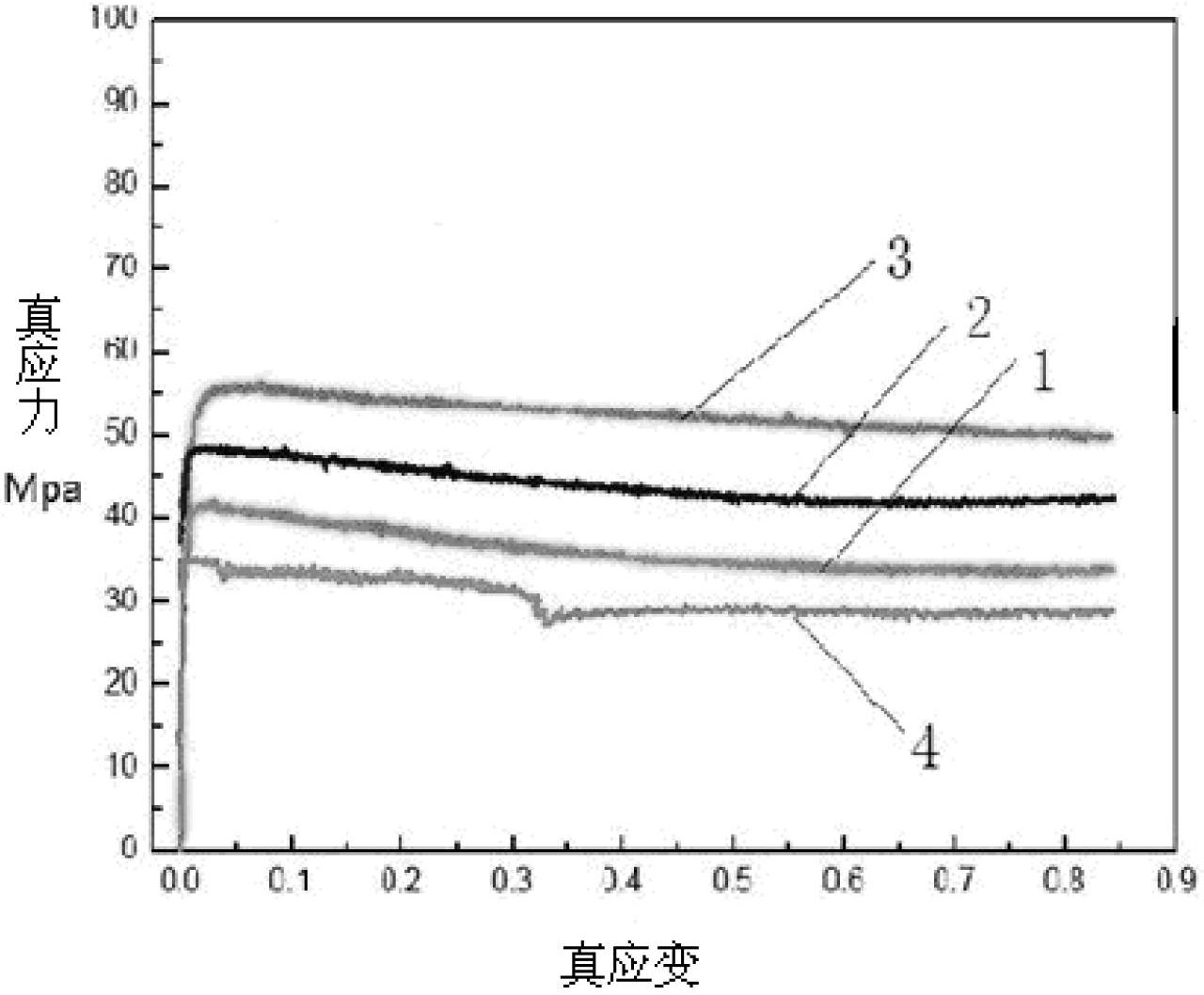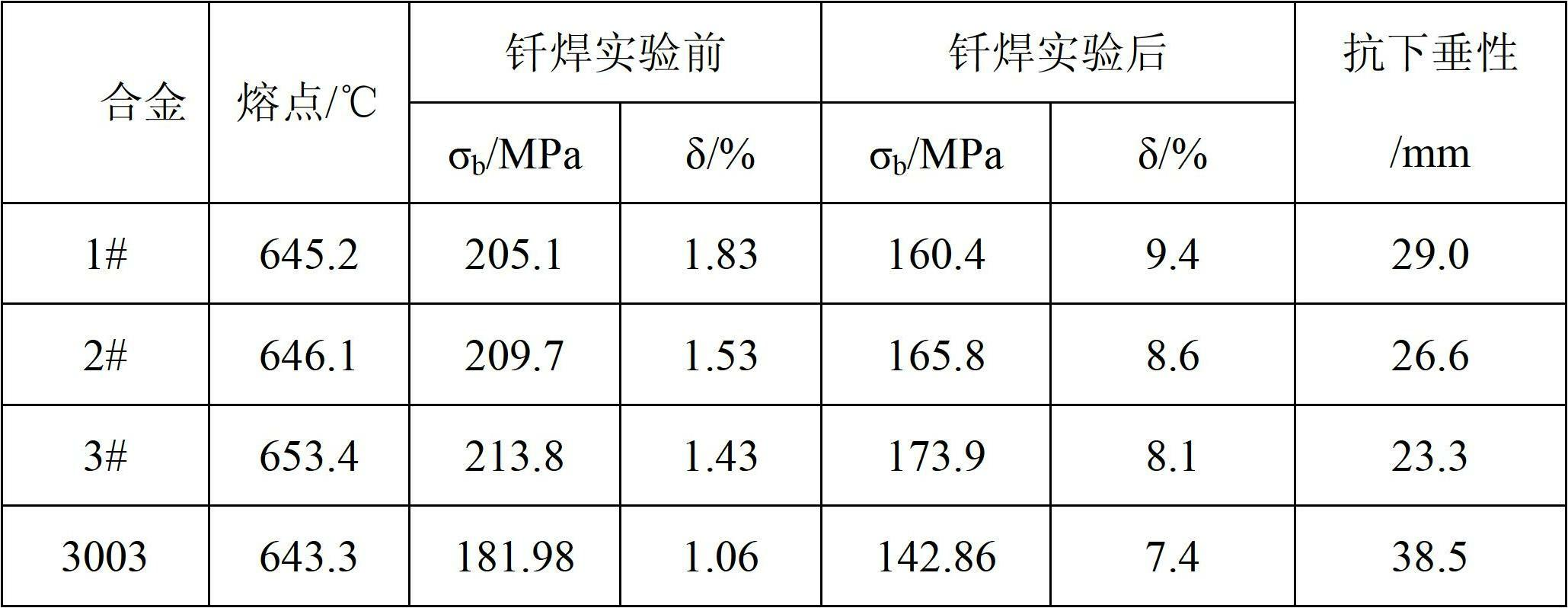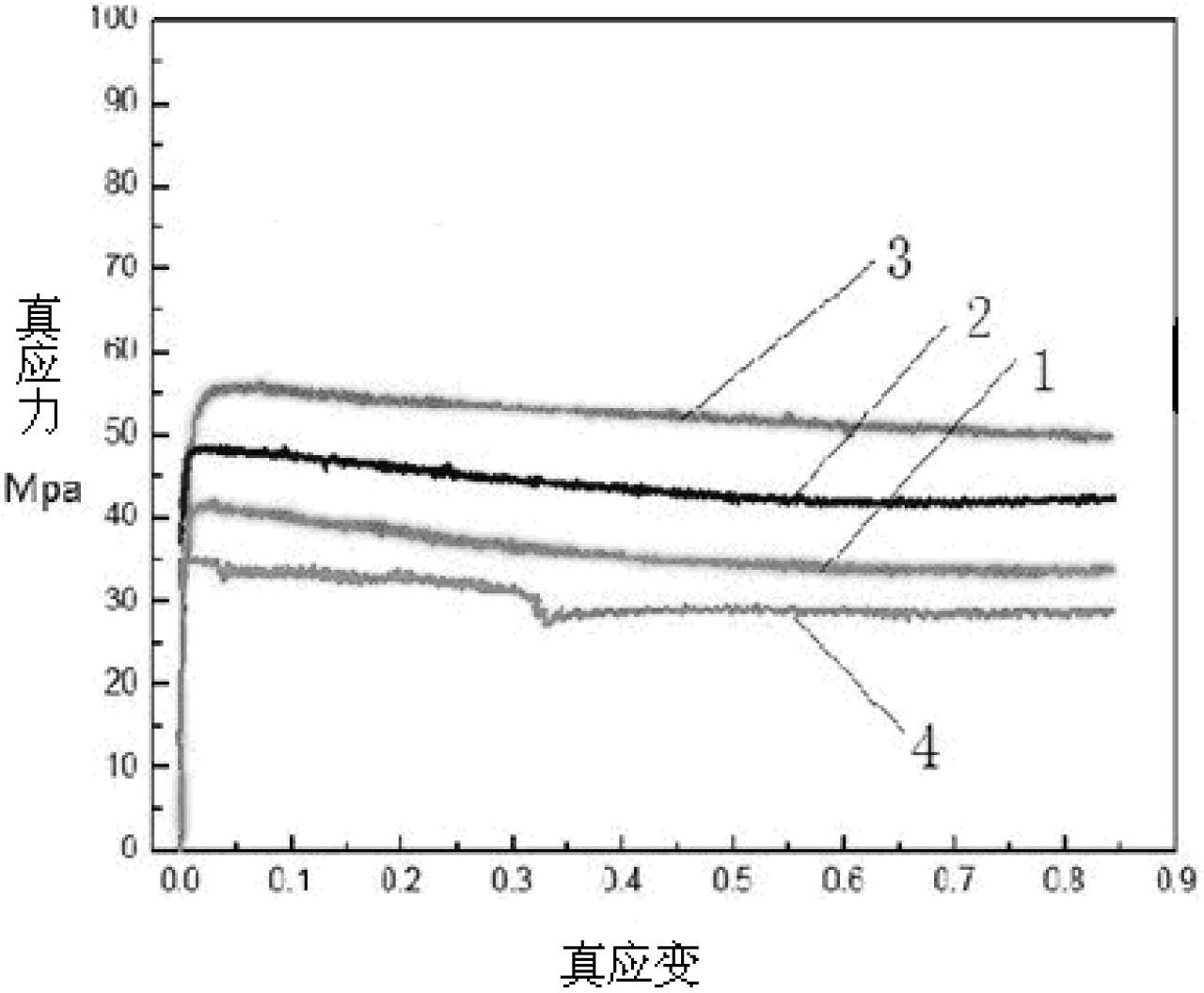High-sag-resistance brazing composite aluminum alloy foil for heat exchanger
A heat exchanger, aluminum alloy technology, applied in the direction of metal rolling, metal layered products, chemical instruments and methods, etc., can solve the problems of low brazing performance, unsuitability, high sag value, etc., and achieve high sag resistance, The effect of easy processing and manufacturing and good processing and forming properties
- Summary
- Abstract
- Description
- Claims
- Application Information
AI Technical Summary
Problems solved by technology
Method used
Image
Examples
Embodiment 1
[0032] The measured component distribution ratio in the core material ingot is:
[0033] Si
Fe
mn
Zn
Cu
V
Zr
Ti
0.412
0.578
1.589
1.582
0.004
0.168
0.106
0.122
[0034] The pouring temperature is 700°C. After pouring, the ingot is kept at 580°C for 36 hours for homogenization treatment;
[0035] The measured component distribution ratio in the coated silicon-aluminum alloy ingot is:
[0036] Si
Al
unavoidable impurities
6.80
92.8
0.04
[0037] The pouring temperature is 690°C;
[0038] Step Two: Rolling
[0039] Take the core material ingot and the silicon-aluminum alloy ingot obtained in the first step, and according to the ratio of the thickness of the cladding layer in the aluminum alloy composite foil to the total thickness of the aluminum alloy composite foil, the thickness of the cladding layer / core Material / coating layer i...
Embodiment 2
[0041] The measured component distribution ratio in the core material ingot is:
[0042] Si
Fe
mn
Zn
Cu
V
Zr
Ti
0.503
0.532
1.566
1.511
0.004
0.191
0.192
0.129
[0043] The pouring temperature is 710°C. After pouring, the ingot is kept at 600°C for 24 hours for homogenization treatment;
[0044] The measured component distribution ratio in the coated silicon-aluminum alloy ingot is:
[0045] Si
Al
unavoidable impurities
7.60
92.0
0.04
[0046] The pouring temperature is 700°C;
[0047] Step Two: Rolling
[0048] Take the core material ingot and the silicon-aluminum alloy ingot obtained in the first step, and according to the ratio of the thickness of the cladding layer in the aluminum alloy composite foil to 10% of the total thickness of the aluminum alloy composite foil, after blanking respectively, press the cladding layer / core ...
Embodiment 3
[0050] The measured component distribution ratio in the core material ingot is:
[0051] Si
Fe
mn
Zn
Cu
V
Zr
Ti
0.594
0.591
1.501
1.411
0.005
0.239
0.195
0.125
[0052] The pouring temperature is 720°C. After pouring, the ingot is kept at 620°C for 18 hours for homogenization treatment;
[0053] The measured component distribution ratio in the coated silicon-aluminum alloy ingot is:
[0054] Si
Al
unavoidable impurities
8.20
91.4
0.04
[0055] The pouring temperature is 710°C;
[0056] Step Two: Rolling
[0057] Take the core material ingot and the silicon-aluminum alloy ingot obtained in the first step, and according to the ratio of the thickness of the cladding layer in the aluminum alloy composite foil to 15% of the total thickness of the aluminum alloy composite foil, after blanking respectively, press the cladding layer / core ...
PUM
| Property | Measurement | Unit |
|---|---|---|
| Thickness | aaaaa | aaaaa |
Abstract
Description
Claims
Application Information
 Login to View More
Login to View More - R&D
- Intellectual Property
- Life Sciences
- Materials
- Tech Scout
- Unparalleled Data Quality
- Higher Quality Content
- 60% Fewer Hallucinations
Browse by: Latest US Patents, China's latest patents, Technical Efficacy Thesaurus, Application Domain, Technology Topic, Popular Technical Reports.
© 2025 PatSnap. All rights reserved.Legal|Privacy policy|Modern Slavery Act Transparency Statement|Sitemap|About US| Contact US: help@patsnap.com



